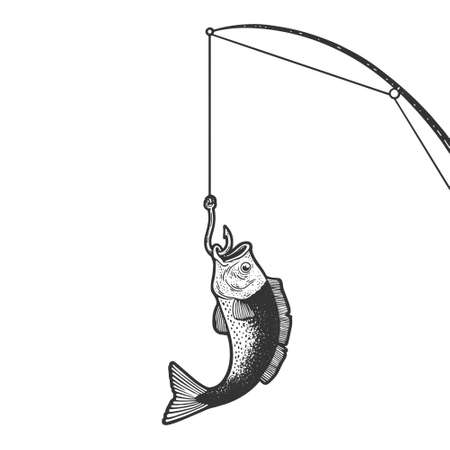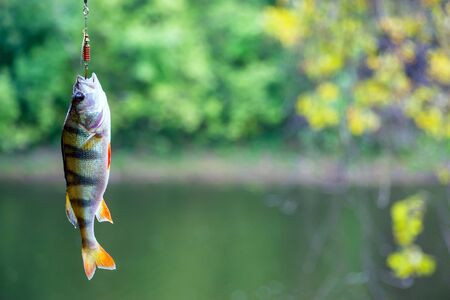1. Understanding Striped Bass Migration Patterns
Surf fishing for striped bass along the Atlantic coast is all about timing and location, and both are heavily influenced by the seasonal migration of these popular game fish. To boost your chances of success, it’s important to understand how water temperatures, spawning cycles, and baitfish movements affect where striped bass can be found throughout the year.
Seasonal Migration Overview
Striped bass are migratory fish that travel up and down the East Coast of the United States, from the Carolinas to Maine. Their movement patterns follow a predictable annual cycle:
| Season | Migration Behavior | Best Surf Fishing Regions |
|---|---|---|
| Spring (April – June) | Move north from wintering grounds in deeper southern waters; enter rivers and estuaries to spawn. | Chesapeake Bay, Delaware Bay, New Jersey beaches |
| Summer (July – August) | Post-spawn fish spread out along northern coasts seeking cooler water temps. | Long Island, Cape Cod, Rhode Island surf zones |
| Fall (September – November) | Begin moving south following schools of baitfish like bunker and mullet. | New Jersey, Delaware beaches, Outer Banks |
| Winter (December – March) | Head to deeper offshore waters off the mid-Atlantic and southern states. | Southeast Virginia, North Carolina surf during warm spells |
The Role of Water Temperature
Water temperature plays a big role in striped bass activity. They prefer temps between 55°F and 68°F. When the ocean hits this range, especially in spring and fall, stripers move into the surf zone to feed aggressively. Tracking local water temps with apps or NOAA data can help you plan your trips more effectively.
Optimal Temperature Ranges for Surf Fishing Striped Bass:
| Water Temperature (°F) | Striper Activity Level |
|---|---|
| < 50°F | Low – Fish are sluggish or moved offshore |
| 55–68°F | High – Prime time for surf fishing action |
| > 70°F | Moderate – Fish move deeper or north to cooler waters |
Baitfish Movements and Feeding Patterns
Stripers don’t just migrate randomly — they follow food. Inshore baitfish species like menhaden (bunker), sand eels, herring, and mullet also move with the seasons. These migrations trigger feeding frenzies near shorelines that are ideal for surf anglers.
Baitfish Migrations That Attract Stripers:
- Mullet Run (Fall): From late September through October, especially in the Mid-Atlantic.
- Bunker Schools (Spring & Fall): Found from New York down to Virginia — look for birds diving!
- Sand Eel Swarms (Late Fall): Especially active off Long Island and New England beaches.
- River Herring Runs (Spring): Trigger big striper action in estuaries and nearby surf zones.
Understanding these migration patterns helps you know when and where to cast your line. In the next section, we’ll dive into specific seasonal tactics to help you make the most of each phase of the striper migration along the surf.
2. Essential Gear and Surf Fishing Setup
If youre gearing up to catch striped bass from the surf, having the right equipment makes all the difference. Striped bass are powerful fish that require strong, reliable gear tailored to different coastal conditions. Heres a breakdown of what you’ll need for a successful surf fishing trip.
Rod and Reel Setup
For surf fishing striped bass, a medium-heavy to heavy action rod between 9 to 11 feet long is ideal. This length gives you the casting distance needed to reach deeper water beyond the breakers. Pair your rod with a sturdy spinning reel sized between 5000 to 8000, depending on the surf conditions and size of fish youre targeting.
Recommended Rod and Reel Combos
| Rod Length | Action | Reel Size | Best For |
|---|---|---|---|
| 9 ft | Medium-Heavy | 5000-6000 | Calmer surf, shorter casts |
| 10 ft | Heavy | 6000-7000 | Moderate surf, longer casts |
| 11 ft | Heavy | 7000-8000 | Rough surf, maximum distance |
Line Selection
Braid is a popular choice for surf anglers due to its strength and thin diameter. A 30-50 lb braided line allows for longer casts and better sensitivity. Its recommended to pair it with a fluorocarbon or monofilament leader (20-40 lb) for abrasion resistance near rocks or structure.
Main Line and Leader Setup
| Main Line Type | Pound Test | Leader Type | Pound Test |
|---|---|---|---|
| Braided Line | 30-50 lb | Fluorocarbon/Mono Leader | 20-40 lb |
Rigs for Striped Bass Surf Fishing
The right rig can make or break your day on the beach. Here are three effective setups commonly used by surf casters targeting striped bass:
- Fish Finder Rig: Great for live bait like bunker or eels; allows natural movement in current.
- High-Low Rig: Ideal for using multiple baits at different depths; good for cut bait or clams.
- Pompano Rig (Modified): Use smaller hooks and heavier sinkers; useful when stripers are feeding close to shore.
Tackle Essentials
Your tackle box should include a variety of hooks (sizes 2/0 to 7/0), sinkers (2 oz to 6 oz depending on surf), swivels, beads, and leader material. Don’t forget pliers, a sand spike rod holder, and extra rigs pre-tied so you can quickly re-rig if needed.
Tackle Checklist for Surf Stripers
| Tackle Item | Description / Use Case |
|---|---|
| Circle Hooks (2/0 – 7/0) | Catches stripers cleanly; often required in some states for conservation. |
| Pyramid Sinkers (2-6 oz) | Keeps bait in place in rough surf conditions. |
| Swivels & Beads | Reduces line twist; helps attract fish visually. |
| Pliers & Knife | For hook removal, cutting line, preparing bait. |
| Bait Bucket or Cooler | Keeps bait fresh throughout your session. |
| Sand Spike Rod Holder | Keeps your rod secure while waiting for bites. |
Selecting the right gear not only improves your chances of landing a trophy striper but also enhances your overall surf fishing experience. Whether youre casting into calm summer waves or braving choppy fall swells, having the proper setup puts you in the best position for success.

3. Best Baits and Lures by Season
When it comes to surf fishing for striped bass, using the right bait or lure at the right time of year can make all the difference. Striped bass feeding habits change with the seasons, so adapting your approach is key. Here’s a seasonal guide to help you match your offerings to what stripers are naturally targeting.
Spring: Herring Runs and Warming Waters
As waters warm in spring, striped bass follow spawning herring into estuaries and coastal areas. This is a prime time to use larger baits that imitate these migrating fish.
Top Baits and Lures for Spring
| Bait/Lure | Type | Why It Works |
|---|---|---|
| Fresh or chunked herring | Natural bait | Mimics natural prey during herring runs |
| Swimbaits (6-9 inches) | Artificial lure | Realistic swimming action mimics baitfish |
| Paddle tail soft plastics | Artificial lure | Great for slower retrieves in cooler water |
Summer: Topwater Action and Nighttime Feeding
During summer, stripers often feed during low-light hours—early morning, dusk, and overnight. Warmer water means faster metabolism, so topwater lures and fast-moving baits become more effective.
Top Baits and Lures for Summer
| Bait/Lure | Type | Why It Works |
|---|---|---|
| Poppers (e.g., Super Strike Little Neck) | Artificial lure | Create surface commotion that triggers explosive strikes |
| Live eels or bunker (menhaden) | Natural bait | Highly attractive scent, especially at night |
| Pencil poppers or spooks | Artificial lure | “Walk-the-dog” action draws attention from active feeders |
Fall: Baitfish Imitations During the Migration South
Fall is striper season on fire. As water temperatures drop, stripers chase schools of peanut bunker, mullet, and other small baitfish along the coast. Matching the hatch is crucial here.
Top Baits and Lures for Fall
| Bait/Lure | Type | Why It Works |
|---|---|---|
| Mullet plugs (metal-lip swimmers) | Artificial lure | Mimic fleeing mullet near the surface |
| Peanut bunker spoons or tins (e.g., Kastmasters) | Artificial lure | Reflective flash attracts stripers chasing bait schools |
| Cut bunker or mackerel chunks | Natural bait | Scent trails draw fish in turbulent fall surf conditions |
4. Top Surf Fishing Hotspots for Stripers
When it comes to surf fishing for striped bass, the East Coast is loaded with legendary locations that consistently produce fish throughout the season. Each area has its own peak times and conditions, but all of them offer a great shot at landing quality stripers from the surf. Here’s a look at some of the most popular hotspots.
New Jersey
New Jersey is a striper magnet during both the spring and fall migrations. The states long coastline provides plenty of access points for surfcasters.
Top Spots in New Jersey:
| Location | Best Time | Notable Features |
|---|---|---|
| Sandy Hook | Spring & Fall | Deep drop-offs and current-rich waters |
| Island Beach State Park | Fall | Plenty of beach access and baitfish activity |
| Cape May | Late Spring | Great structure and strong tidal flows |
Long Island, New York
Long Island is one of the most famous striped bass destinations in the country. Anglers flock here for both quantity and trophy-sized fish.
Top Spots on Long Island:
| Location | Best Time | Notable Features |
|---|---|---|
| Montauk Point | Fall | Boulder fields, rips, and heavy bait presence |
| Jones Beach | Spring & Fall | Easily accessible with consistent action |
| Fire Island | Summer Nights | Narrow inlets and deep channels nearby |
Cape Cod, Massachusetts
Cape Cod offers a mix of sandy beaches, rocky points, and inlets that are perfect for targeting migrating stripers.
Top Spots in Cape Cod:
| Location | Best Time | Notable Features | ||||||||||||||||||||||||
|---|---|---|---|---|---|---|---|---|---|---|---|---|---|---|---|---|---|---|---|---|---|---|---|---|---|---|
| Race Point Beach | Spring & Early Summer | Migratory funnel point with deep water access close to shore | ||||||||||||||||||||||||
| Nauset Beach | Summer Nights & Early Fall | Lively surf and abundant baitfish schools | ||||||||||||||||||||||||
| Sandy Neck Beach | Late Spring to Mid Summer | Diverse structure including sandbars and drop-offs | 5. Tips for Reading the Surf and Local Regulations
| Surf Zone Feature | Description | Why Its Productive |
|---|---|---|
| Sandbars | Raised underwater ridges parallel to shore | Bass often patrol the deeper water just outside or inside sandbars looking for baitfish funneled by waves |
| Troughs | Deeper channels between sandbars or between the bar and beach | Act as highways for feeding fish; great during tide changes when water movement increases |
| Points | Narrow sections of land that jut into the surf | Create current breaks and attract bait; striped bass use these ambush points |
Tips for Spotting These Features
- Low Tide Scouting: Walk the beach during low tide to visually locate bars, troughs, and points.
- Wave Behavior: Look for areas where waves break earlier (indicating shallow sandbars) or roll through without breaking (deeper troughs).
- Bait Activity: Birds diving or baitfish jumping near these features are good signs of predator activity.
Understanding Local Striped Bass Regulations
Before heading out, always check with your state’s Department of Natural Resources or Fish & Wildlife agency. Striped bass regulations can vary widely depending on location and time of year. Heres a general overview:
| Region | Typical Size Limit (inches) | Crew Limit / Bag Limit |
|---|---|---|
| Northeast (e.g., Massachusetts, New York) | 28″ – 31″ | 1 fish per angler/day (subject to change) |
| Mid-Atlantic (e.g., New Jersey, Maryland) | 28″ – 31″ slot limit common | 1-2 fish per angler/day depending on state rules |
| Southeast (e.g., North Carolina) | Highly regulated or closed in some areas during certain seasons | Check local closures and special management zones |
Where to Find Regulation Info
- Massachusetts Division of Marine Fisheries
- New York DEC Fishing Regulations
- Maryland DNR Fisheries Service
By learning how to read the surf and staying informed about striped bass regulations in your area, youll improve both your catch rate and your responsibility as an angler. Keep your eyes on the water—and the rules—to make every trip count.


